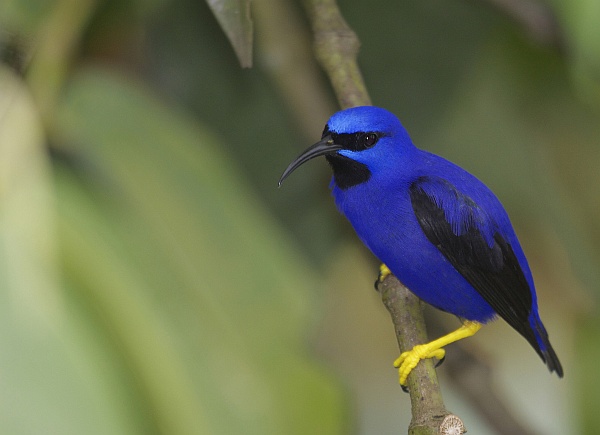
15 September 2021
If you take photos of purple things you may have noticed that your camera renders the images as blue.
My classic example is the purple honeycreeper photo which I used on the blog in 2014. The bird looks blue in the photo above but in the photo below, taken with a different camera or edited differently, the bird is purple. The field guide says he is deep violet-blue, thus named the purple honeycreeper.
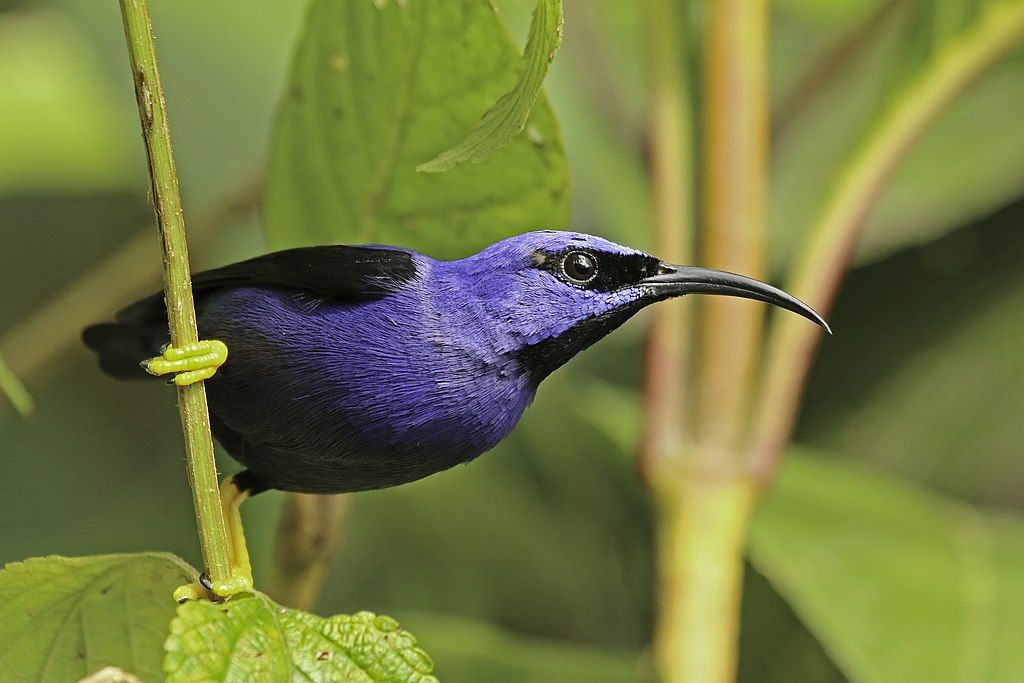
The purple-turns-blue problem is caused by the fundamental difference between how our eyes see violet light and how a camera does.
Our eyes have color receptors that pull in three colors of light — short wavelength (S) blue, middle wavelength (M) green, and long wavelength (L) red — with sensitivity peaking at certain wavelengths. Our brains process color by noting the ratios from each receptor. When we see purple our brains detect information from the blue and red sensors.
Camera color receptors pull in the same colors too but they peak at slightly different wavelengths than our eyes and the camera processes blended colors differently than our brains do. Robert Schleif at Johns Hopkins University explains:
Digital cameras distinguish colors in about the same way as the human eye. Most likely however, distinguishing colors at the blue [violet] end of the spectrum utilizes the blue and green sensors rather than the blue and red sensors used in humans.
— Sensing Violet: The Human Eye and Digital Cameras Robert Schleif, Johns Hopkins University
His diagram, link-embedded below, shows the difference between human and Nikon D70 camera color sensitivity.

Humans register purple in our brains by seeing blue+red. Most cameras register purple using blue+green so they cannot match the color we see.
For example, here’s an unedited photo of a purple aster taken by my Pixel 5 cellphone camera. The camera makes it blue.
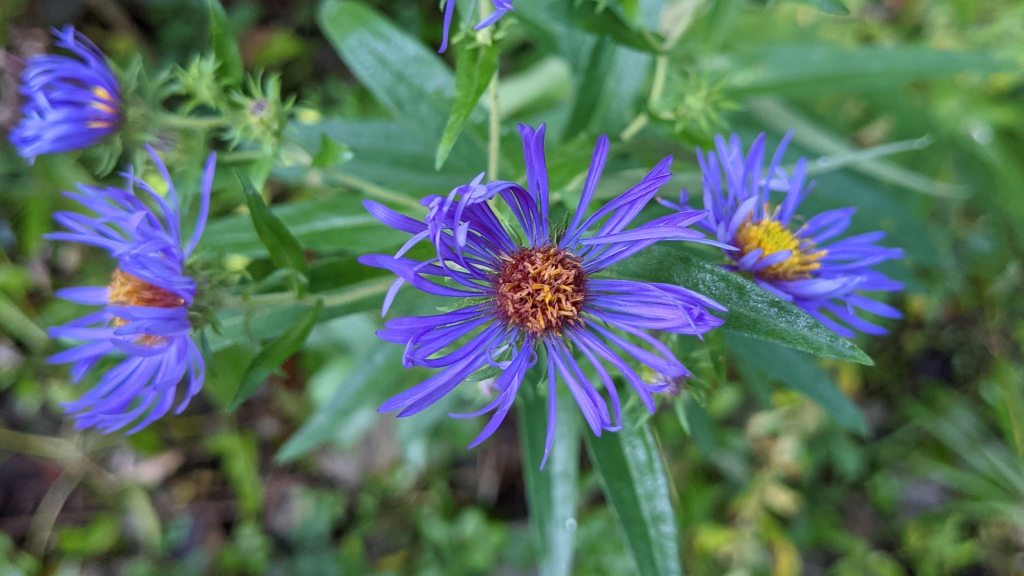
The Pixel photo editor can fix it. I used the “Enhance” filter to come closest to the original flower color but this makes the photo too bright to my liking.
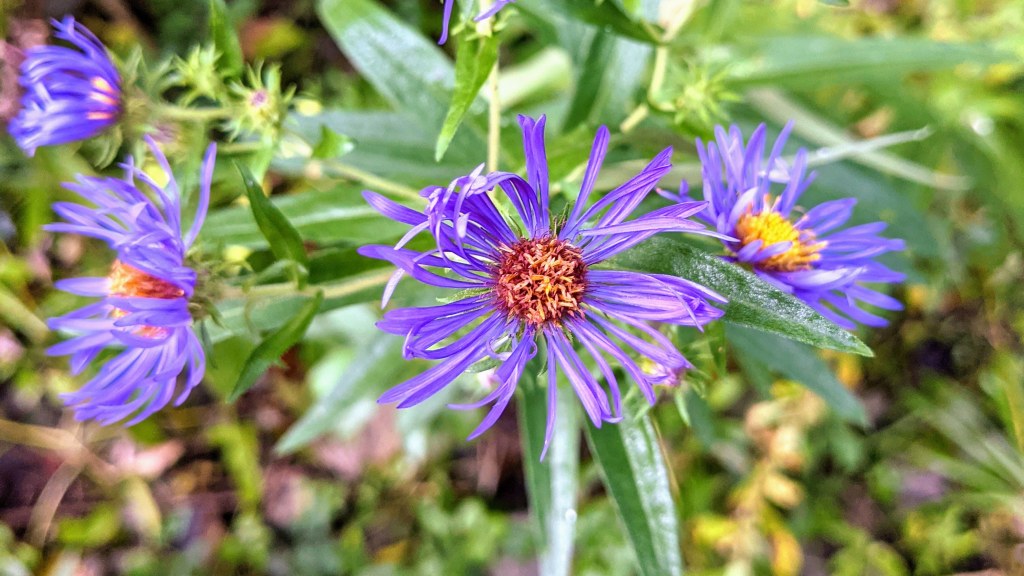
My laptop photo editor can fix it, too, by simply pumping up the red. It’s close to the right color but still not perfect.
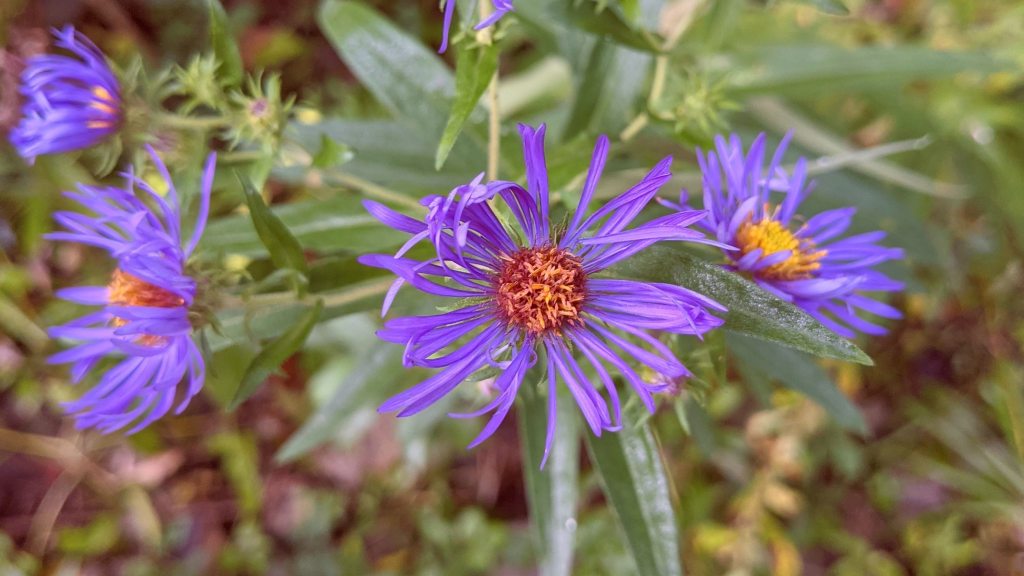
So now you know why deep violet looks blue in many photos. Purple honeycreepers and purple asters are not truly blue.
For more information see Robert Schleif’s article: Sensing Violet: The Human Eye and Digital Cameras.
p.s. Light is violet. Purple is a color constructed by our brains. Bird brains see the color purple differently than we do because they can see ultraviolet light. I’m sure the purple honeycreeper looks quite different to his fellow birds. Perhaps he is ultraviolet.
(photos from Wikimedia Commons and Kate St. John, graph is link-embedded from Sensing Violet: The Human Eye and Digital Cameras, Robert Schleif, Johns Hopkins University Department of Biology)